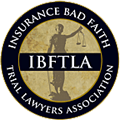What Should I Do If I’ve Witnessed an Accident?
In California, your odds of getting into a car accident are relatively high. There were 3,563 traffic fatalities in 2018 alone, according to the California Office of Traffic Safety. You also have a good chance of witnessing an accident at some point in your life. Knowing what to do as an accident witness could allow you to help others while keeping yourself safe.
Make Sure You Are Not in Danger
While stopping at the scene of a car accident and helping those involved is noble and can save lives, you should only do so if you can safely. If you are the first person to an accident, the scene could be dangerous. Other oncoming cars may still add to the crash, or there may be broken glass, leaking gas or fires. Pull over as close to the scene of the accident as you can without putting yourself in danger. Only step out of your vehicle once you have ascertained the area is safe.
Check for Injuries
Turn your hazard lights on before leaving your vehicle to help prevent further collisions. If you have road flares or emergency triangles, use them. Once you are close to the crash scene, ask if anyone has any injuries. If the answer is yes, you can help by calling 911 and requesting an ambulance to the scene.
Call 911
As someone who witnessed a car accident, you are in a unique position to call the police before anyone else has the chance. The victims may be too injured or disoriented to make the call right away. Always call 911 to report a car accident you witnessed if it looks to have caused injuries, deaths or more than $1,000 in property damage. If anyone is injured, make sure to say so when speaking to the police. Stay at the scene until the police arrive, if you can, to tell them what you saw.
Only Render Aid in an Emergency
As you wait for the police to arrive, you may need to take action to help those injured in the crash. You should only lend medical care if an injured victim appears to be in imminent danger, however, such as if the car has caught on fire. Otherwise, leave the injured victim where he or she is to avoid exacerbating injuries. If a crash victim has an injured spine, for example, moving him or her incorrectly could cause permanent damage. You may sit and talk with the injured victim to soothe him or her, but only render aid in an emergency.
If the situation is an emergency, don’t be afraid of becoming liable for furthering a victim’s injuries. Move the victim out of harm’s way immediately. California’s Good Samaritan Law states that no person who renders emergency care (medical or nonmedical) at the scene of an accident in good faith will be liable for any civil damages resulting from the action. Thus, if you move an injured victim in a good faith attempt to save him or her, you will not be responsible for damages, even if you accidentally exacerbate the victim’s injuries.
Help Move Disabled Vehicles
Something else you can do while you wait for the police is to help the owners of disabled vehicles move them out of the road. This can keep everyone safe by preventing further collisions. If you can, tell those involved to take photographs of the scene as-is before anyone moves the damaged vehicles. You could also take these photos yourself and send them to the victim. Then, put disabled vehicles in neutral and help others push them safely to the side of the road.
Act as an Eyewitness
The last thing you can do as an eyewitness to a car accident is to lend your services to injured victims during a lawsuit. Let the victim know you are willing to give a statement about what you saw on the record. This can mean signing a statement and giving it to the victim, or it may mean attending a deposition or even testifying at a personal injury trial. Although it is not mandatory for you to act as an eyewitness, doing so could help an injured victim achieve a fair recovery. For more information about the court process as an eyewitness, consult with a Sacramento car accident attorney.

















